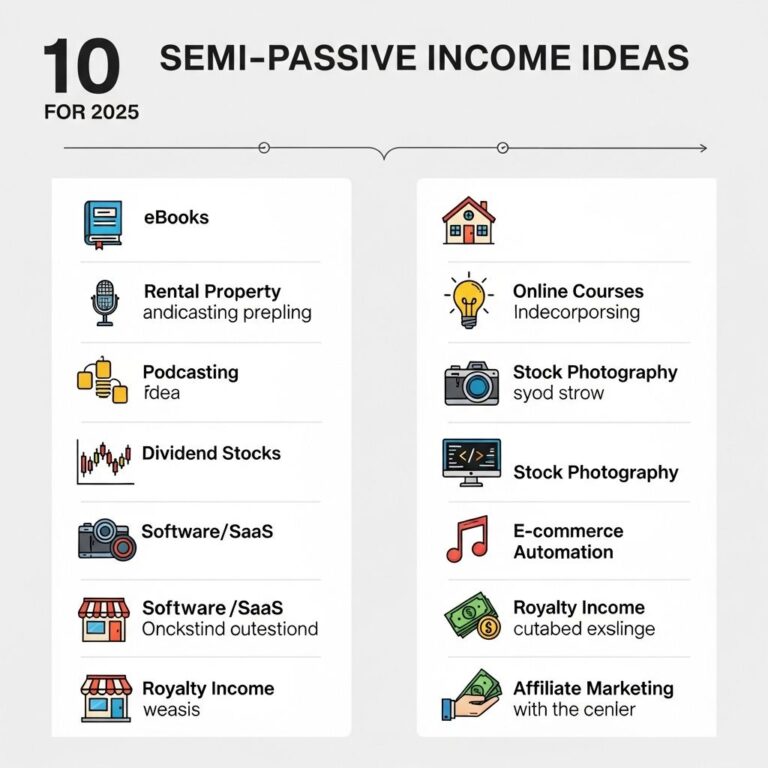In today’s fast-paced financial landscape, the quest for passive income has gained significant traction among savvy investors. With the right strategies and options, individuals can create streams of income that work for them, even when they are not actively engaged. This article delves into five smart investments that can help you generate passive income while aligning with modern financial trends.
Table of Contents
Understanding Passive Income
Passive income refers to earnings derived from ventures in which a person is not actively involved. This can include income from rental properties, dividends, and other investments that require little to no effort to maintain over time. The appeal of passive income lies in its potential to provide financial freedom and stability, allowing individuals to focus on other pursuits.
1. Real Estate Investment Trusts (REITs)
REITs are companies that own, operate, or finance income-producing real estate across a range of property sectors. By investing in REITs, you can gain exposure to a diversified portfolio of real estate without the need to manage properties directly. They are required by law to distribute at least 90% of their taxable income to shareholders, making them a popular choice for passive income.
Advantages of REITs
- Liquidity: Unlike traditional real estate investments, shares of publicly traded REITs can be bought and sold on major exchanges.
- Diversification: Investing in a REIT allows exposure to multiple properties, spreading risk across various assets.
- Dividends: REITs often provide attractive dividend yields, providing regular income to investors.
Types of REITs
| Type | Description |
|---|---|
| Equity REITs | Invest primarily in owning and managing income-generating properties. |
| Mortgage REITs | Provide financing for income-producing real estate by purchasing or originating mortgages and mortgage-backed securities. |
| Hybrid REITs | Combine the investment strategies of both equity and mortgage REITs. |
2. Dividend Stocks
Investing in dividend-paying stocks is another effective strategy for generating passive income. Many well-established companies distribute a portion of their earnings to shareholders in the form of dividends. This investment strategy not only offers regular income but also has the potential for capital appreciation.
Key Considerations
- Research: Look for companies with a strong history of stable or increasing dividends.
- Diversification: Spread your investments across various sectors to mitigate risk.
- Reinvestment: Consider using a Dividend Reinvestment Plan (DRIP) to purchase more shares over time.
3. Peer-to-Peer Lending
Peer-to-peer (P2P) lending platforms allow individuals to lend money to others in exchange for interest payments. This investment strategy can yield higher returns compared to traditional savings accounts or bonds, making it an attractive option for generating passive income.
How P2P Lending Works
The process typically involves the following steps:
- Choose a P2P lending platform that suits your investment goals.
- Review potential borrowers’ profiles and creditworthiness.
- Invest in loans by funding a portion of the requested amount.
- Receive monthly interest payments as borrowers repay the loans.
Risks and Rewards
- Risks: Default risk is a concern, as borrowers may fail to pay back their loans.
- Rewards: Potential for high returns, often ranging from 5% to 12% or more.
4. Index Funds and ETFs
Index funds and exchange-traded funds (ETFs) are investment vehicles that track specific market indices, such as the S&P 500. These funds provide exposure to a broad range of stocks or bonds, making them ideal for passive investors looking for diversification without actively managing their portfolios.
Benefits of Index Funds and ETFs
- Low Costs: Generally have lower expense ratios compared to actively managed funds.
- Passive Management: Designed to replicate market performance rather than outperform it.
- Tax Efficiency: Often generate fewer capital gains than actively managed funds.
5. High-Yield Savings Accounts and CDs
While traditionally considered lower-yield investments, high-yield savings accounts and certificates of deposit (CDs) can offer a reliable source of passive income. They are especially suitable for conservative investors looking for safety and liquidity.
Comparative Overview
| Investment Type | Typical Yield | Liquidity |
|---|---|---|
| High-Yield Savings Account | 0.50% – 2.00% | Highly liquid |
| Certificates of Deposit (CDs) | 1.00% – 2.50% | Less liquid (penalties for early withdrawal) |
When to Use High-Yield Accounts
- Short-term savings goals
- Emergency funds
Conclusion
Creating passive income streams requires a thoughtful approach and careful consideration of various investment options. By diversifying your portfolio across these five smart investments—REITs, dividend stocks, P2P lending, index funds and ETFs, and high-yield savings accounts—you can build a robust strategy that aligns with your financial goals. Always conduct thorough research and consider consulting with a financial advisor to tailor your investment strategy to your unique situation.
FAQ
What are smart investments for passive income?
Smart investments for passive income include real estate, dividend stocks, peer-to-peer lending, index funds, and high-yield savings accounts.
How does real estate generate passive income?
Real estate generates passive income through rental payments received from tenants, as well as potential appreciation in property value over time.
What are dividend stocks and why are they considered a passive income investment?
Dividend stocks are shares in companies that pay a portion of their earnings back to shareholders, providing a regular income stream without needing to sell the stock.
What is peer-to-peer lending and how can it be a source of passive income?
Peer-to-peer lending involves lending money to individuals or small businesses through online platforms, earning interest on the loans as a source of passive income.
Why are index funds a good option for passive income?
Index funds are a low-cost investment option that tracks a specific market index, allowing investors to earn returns based on overall market performance with minimal effort.
How can a high-yield savings account contribute to passive income?
A high-yield savings account offers a higher interest rate than traditional savings accounts, allowing your savings to grow passively over time with minimal risk.









